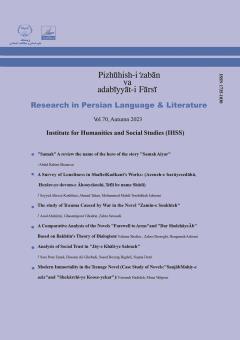Human inner can have three states; psychological, mystical and satanic states. Cognition of these states, especially mystical and satanic states has been one of the important topics of mystical epistemology, and the mystics themselves have been awared in this matter. Te
More
Human inner can have three states; psychological, mystical and satanic states. Cognition of these states, especially mystical and satanic states has been one of the important topics of mystical epistemology, and the mystics themselves have been awared in this matter. Teresaof Avila (1515-1582 AD) and JalālaldīnRūmī (604-672 AH) have more or less dealt with this matter in their works. Extracting and comparing the opinions of these two mystics can help more in recognition of the true and false mystical states.The study of this issue showed that both mystics consider the God as the main source of the true mystical state and the devil and the illusion of man as the source of false stateandemerge the consolations to human beings can be given withthemysticalstates; which are also divided into two categories: mystical and satanic. Apparently Teresa and Rumi both believe that genuine status can be realize to the future, but the false states remain in the realm of mental or expressive matters. Teresa's speeches are more precise and slight than Rumi in this feild.Both mystics suggest personal testing in some cases to distinguish true states from false states; That is, until the person himself hasn’t spent through such states, he can not recognize other cases.In this feild, Rumi mentions the authenticity recognition of a mystical state through another mystical state, which is similar to Teresa’s idea. According to both mystics, real statefrees the human from the captivity of the world, whereas the false statecaptureshuman into the world and carnal desires. Enjoying the criterions of the lack clarity of inductions, false, (locution) and their similarity to the dream, the availability of false state and far from the availability of mystical states and the possibility of verifying them in prayer and supplication can help in recognizing these states. Unexpected, the non-attribution of pure states to oneself and turning one's attention to God, reinforcing morality and religiosity are the indicators of mystical states.
Manuscript profile


